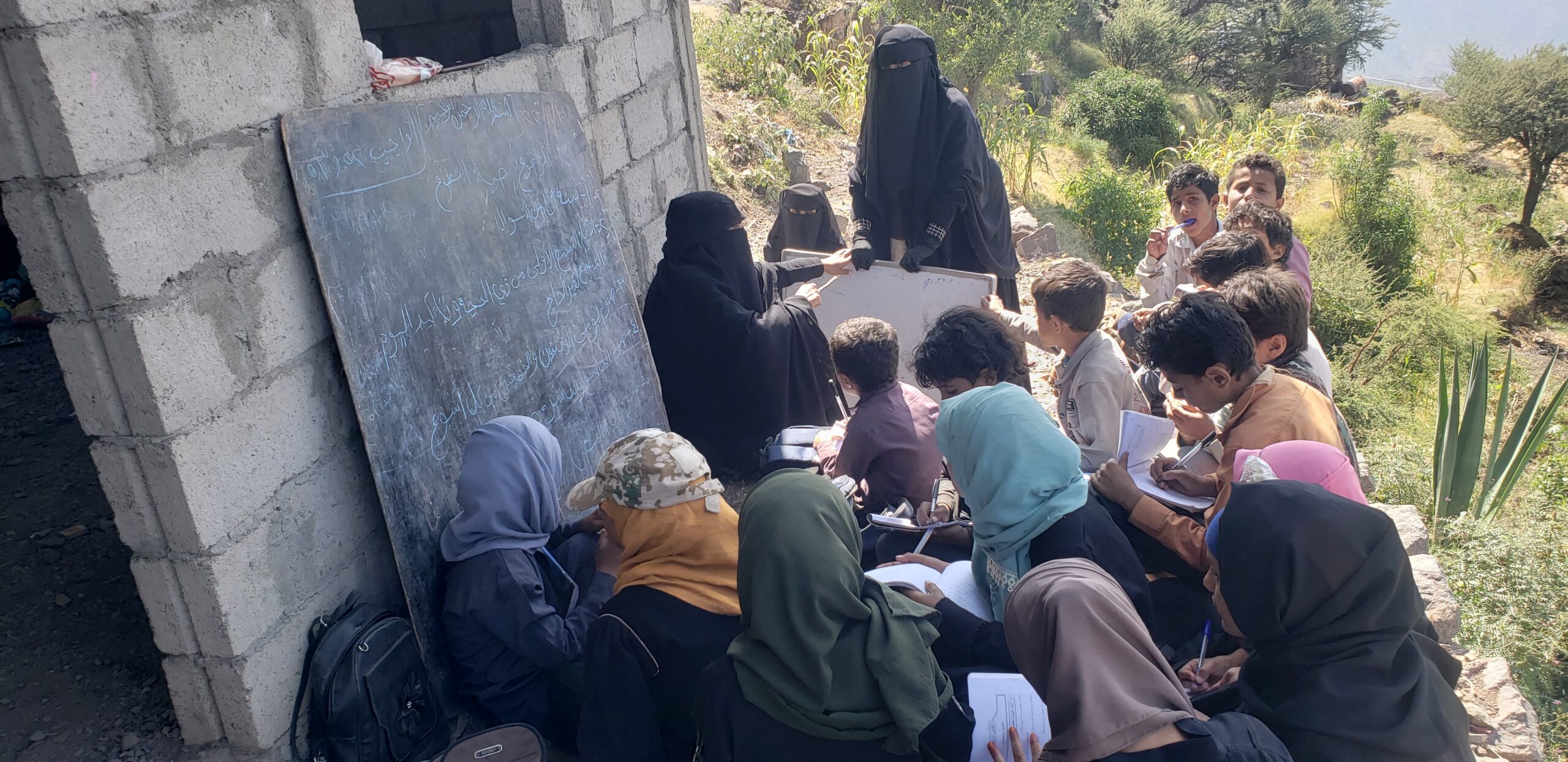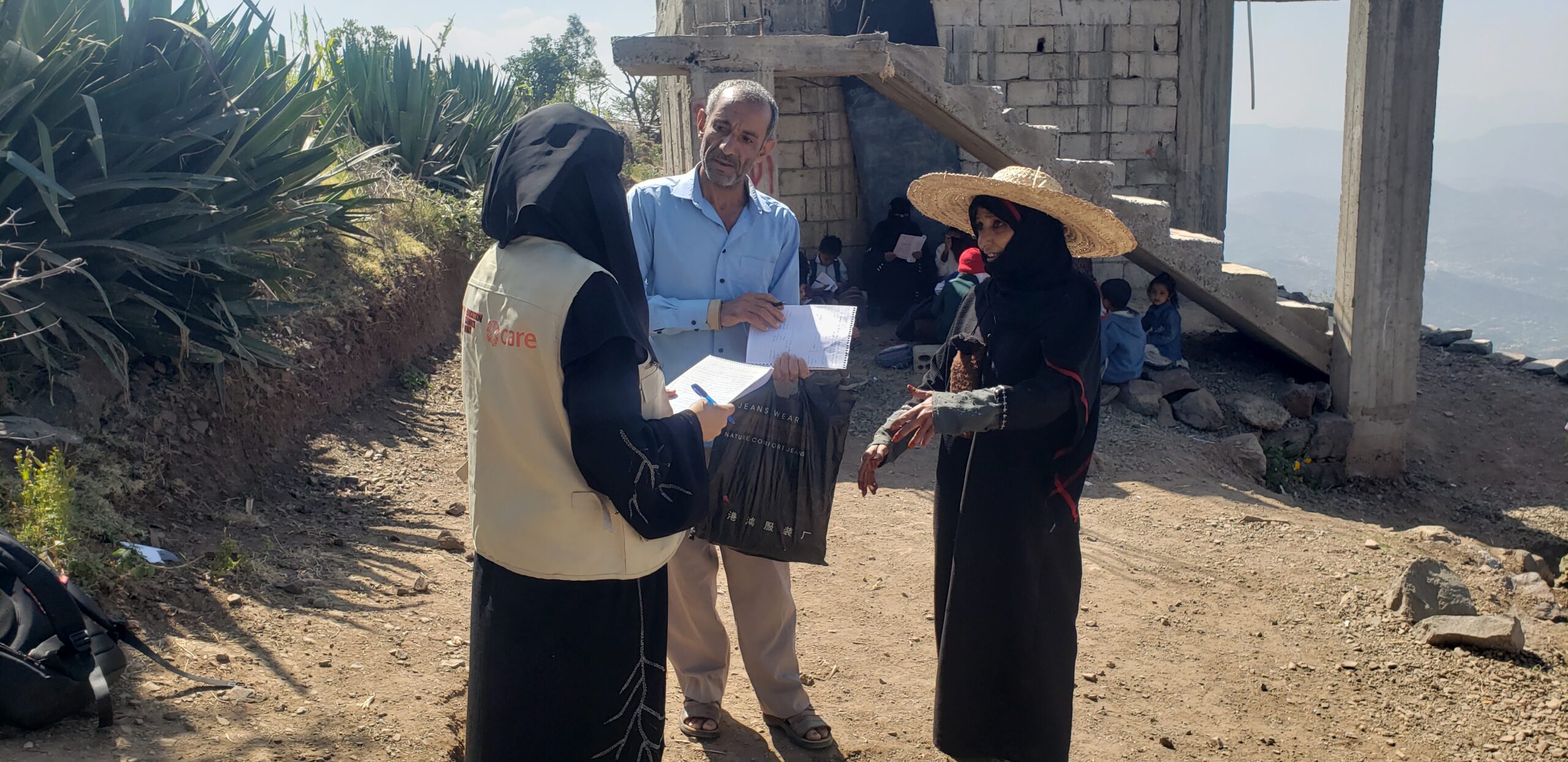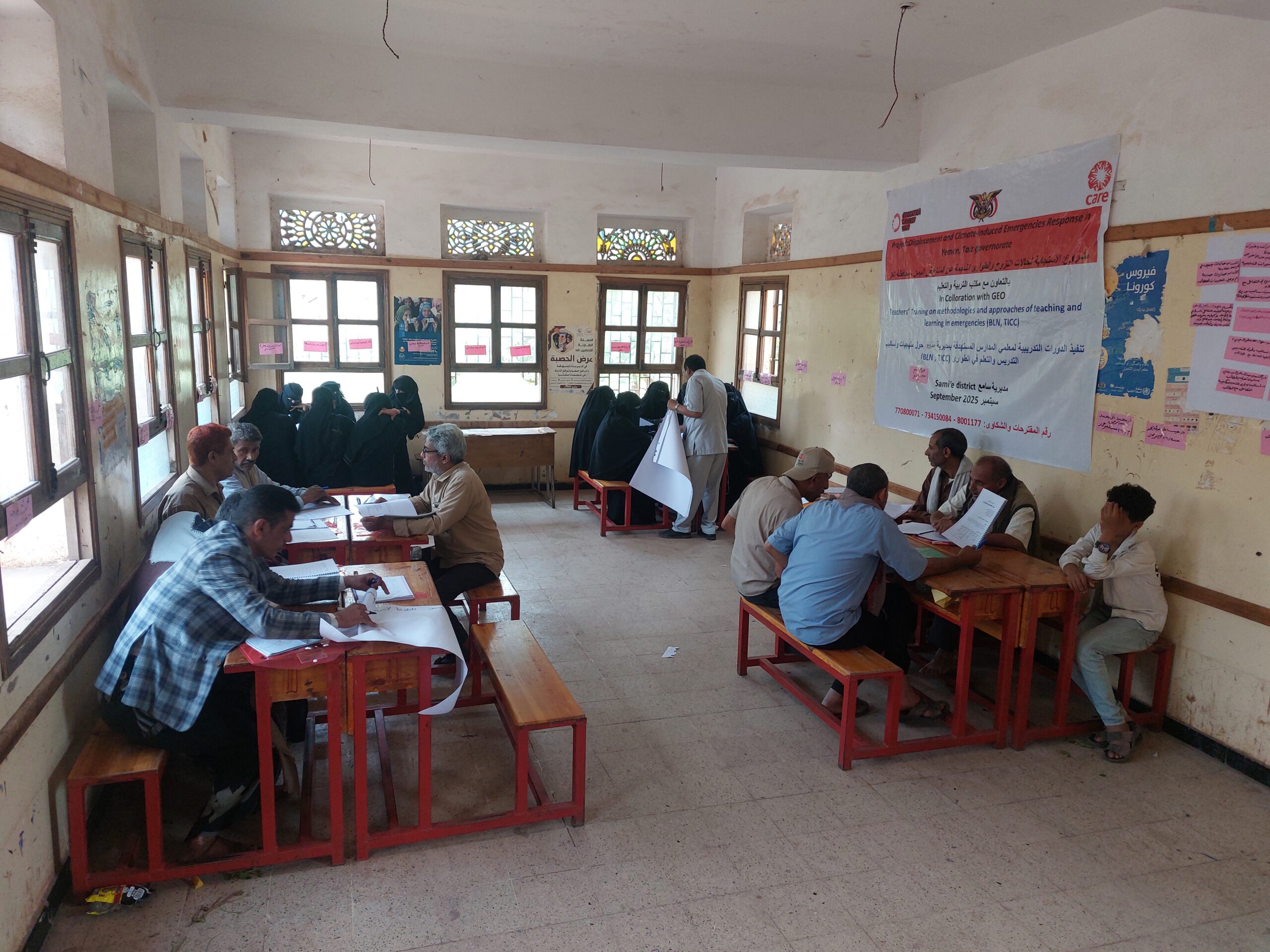In the rugged highlands of Taiz, southwestern Yemen, in the district of Sama’a, the story of Al-Amal School mirrors the struggle of millions of Yemeni children whose right to education hangs by a thread. This region is among the most challenging in terms of terrain and isolation. For years, children in the remote village of Shaab Omrain walked up to 10 kilometers daily to reach the nearest school. Girls often dropped out by the age of 12, fearing harassment or harm along the treacherous mountain paths they had to navigate on. Here, children dream of something simple: a seat in a school close to their homes.
This local story is not an exception; it is Yemen’s reality in 2025. After a decade of conflict, the country faces one of the world’s worst education crises. According to the Humanitarian Needs Overview 2025, 6.8 million people require education assistance, including 3.2 million school-aged children who remain out of school.
The collapse of Yemen’s education system is staggering. One in four schools is unfit for use, destroyed, damaged, or repurposed as shelters. Teachers, unpaid for years, have abandoned classrooms, leaving students crowded under tents or in crumbling buildings. In some areas, classes exceed 100 students, with no desks, electricity, or clean water.
Girls bear the heaviest burden. Around 1.5 million girls are out of school, facing compounded risks of child marriage and adolescent pregnancy. In rural districts, cultural norms and insecurity force families to keep daughters at home. For many, marriage becomes the only perceived alternative to education.
The consequences are devastating. Education is often the first service suspended during conflict and the last to be restored. Without schooling, children lose not only academic skills but also the sense of normalcy that protects them from child labor and exploitation. Already, 7.4 million children in Yemen need protection services, as a result of the increasing trend of child marriage and surge in child labor.
Communities fight back with resilience. In Shaab Omrain, villagers pooled savings of up to 280 USD, to lay the foundation of a school. Women carried water and mixed cement alongside men. “We worked side by side with men, carrying cement to the roof and donating what little money we had. The school was every mother’s dream,” says Amriya, one female local who actively participated in building the school.
By 2024, three bare classrooms stood ready to host 150 eager learners. When the community finally opened their modest school, it was little more than a name on paper, no proper classrooms, no water, no toilets. Lessons were held outdoors under trees, and students shared worn-out notebooks among themselves. Children had no choice but to bear the brunt of the cold throughout winter, studying while shivering under trees when rooms would overflow. Their story reflects a nationwide struggle where hope survives against all odds. “We’ve been teaching some classes outdoors. We’ve had no protection from rain or wind. Children have spent long hours without drinking water, and sometimes they’d have to go far among trees to relieve themselves, exposing them to where snakes or scorpions may lurk,” says Imarat, a volunteer female teacher at Al-Amal School.





